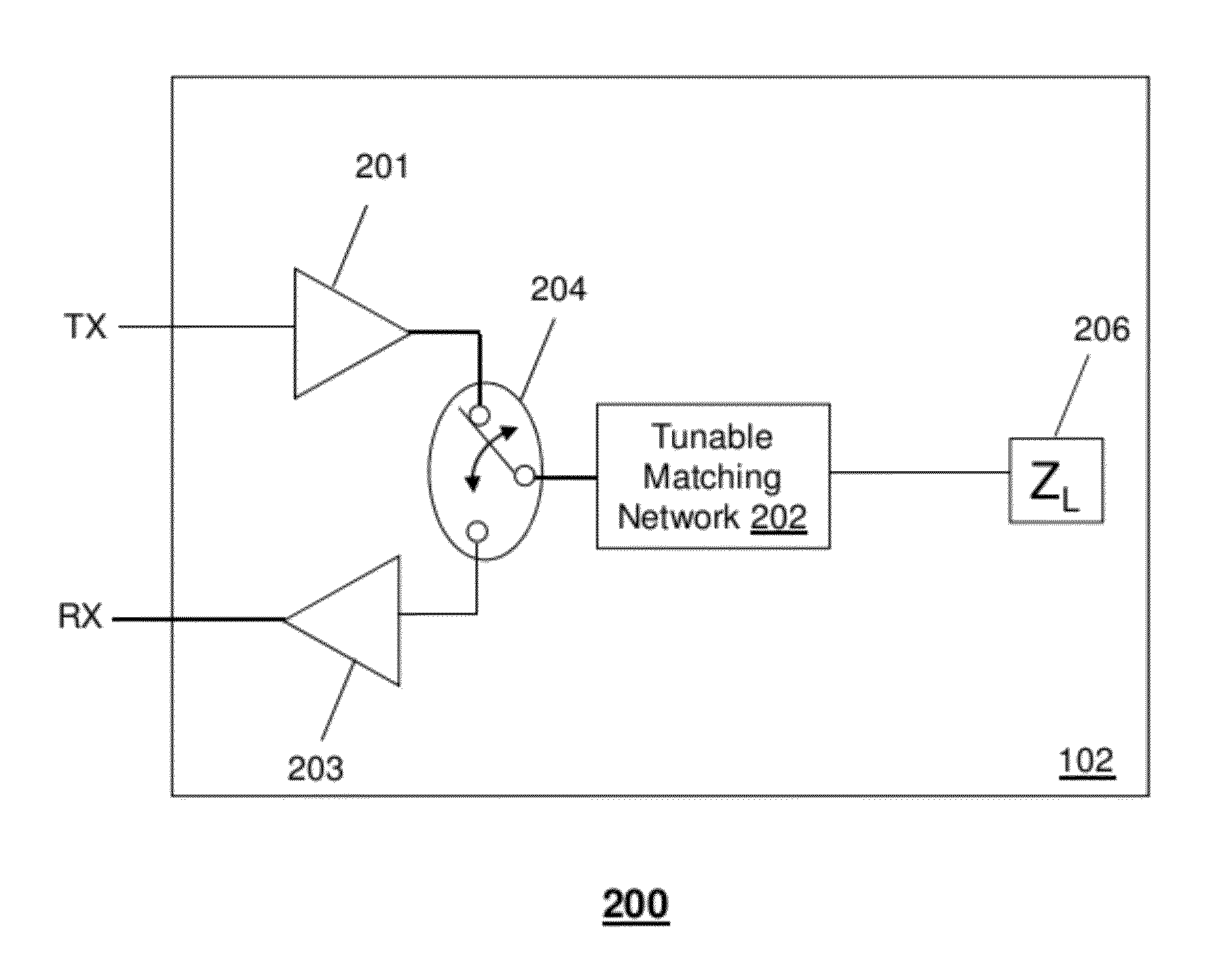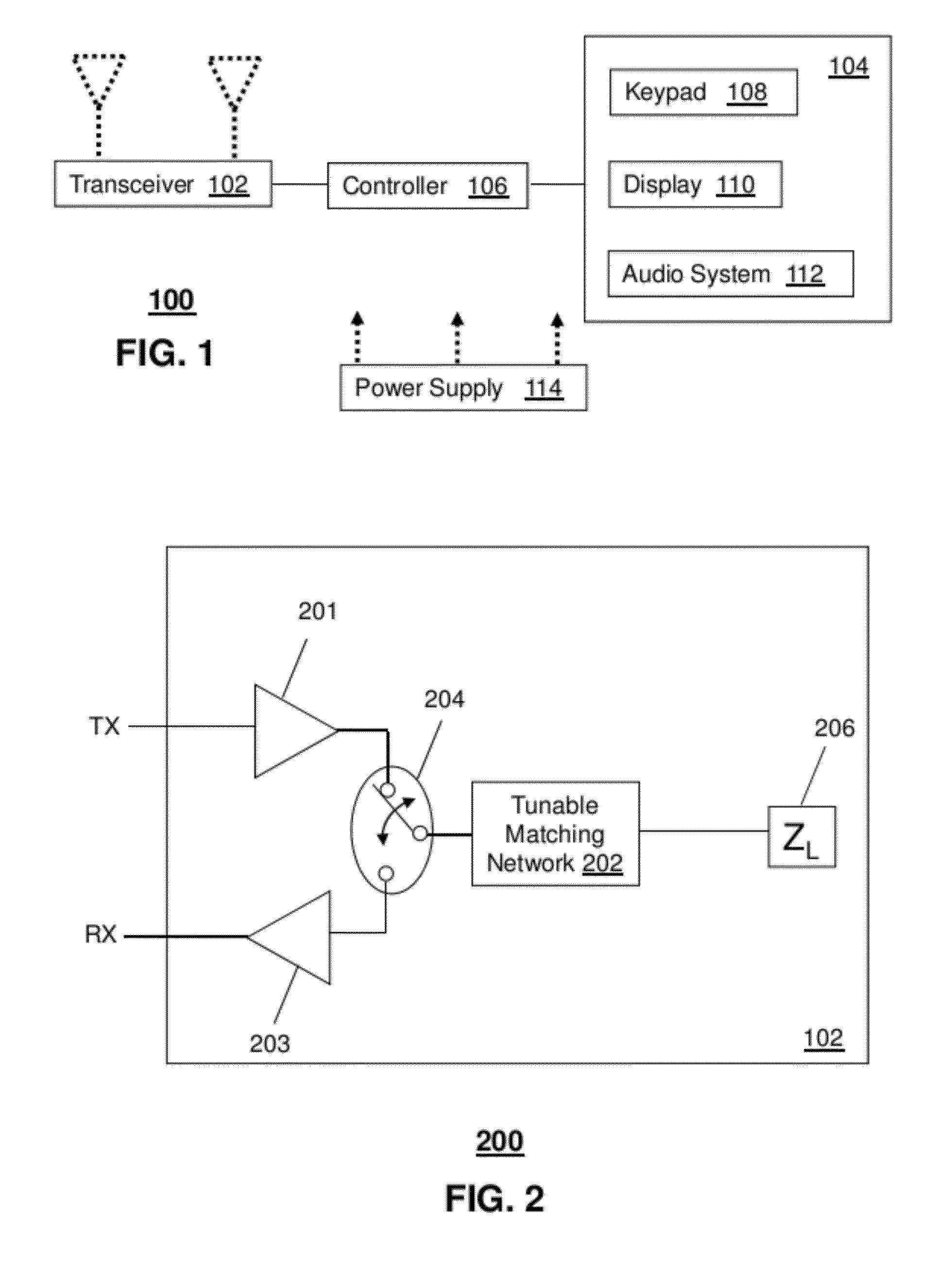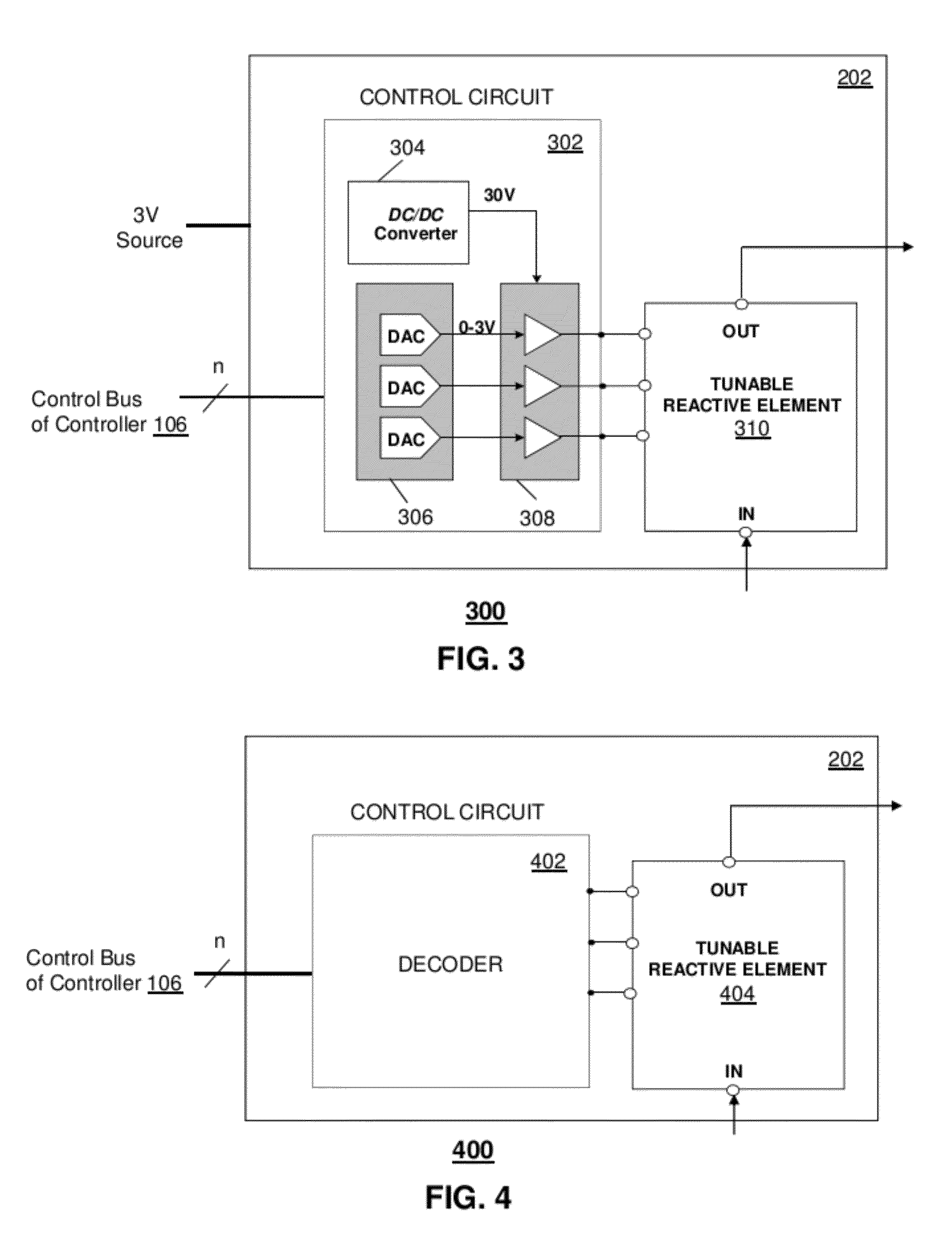Method and apparatus for tuning antennas in a communication device
- Summary
- Abstract
- Description
- Claims
- Application Information
AI Technical Summary
Problems solved by technology
Method used
Image
Examples
Embodiment Construction
[0016]One embodiment of the present disclosure entails a method including obtaining a first operational metric for a transmitter of a communication device and determining a range of impedances based on the first operational metric, where the range of impedances is associated with an acceptable level of performance for the communication device. The method can include obtaining a second operational metric for the transmitter and determining a target impedance within the range of impedances based on the second operational metric. The method can also include tuning a first impedance matching network based on the target impedance, where the first impedance matching network is coupled with a first antenna of the communication device. The tuning can be based on adjusting a first variable component of the first impedance matching network.
[0017]One embodiment of the present disclosure entails a method of tuning a communication device, where the method includes obtaining an RF voltage at an o...
PUM
 Login to View More
Login to View More Abstract
Description
Claims
Application Information
 Login to View More
Login to View More - R&D
- Intellectual Property
- Life Sciences
- Materials
- Tech Scout
- Unparalleled Data Quality
- Higher Quality Content
- 60% Fewer Hallucinations
Browse by: Latest US Patents, China's latest patents, Technical Efficacy Thesaurus, Application Domain, Technology Topic, Popular Technical Reports.
© 2025 PatSnap. All rights reserved.Legal|Privacy policy|Modern Slavery Act Transparency Statement|Sitemap|About US| Contact US: help@patsnap.com



